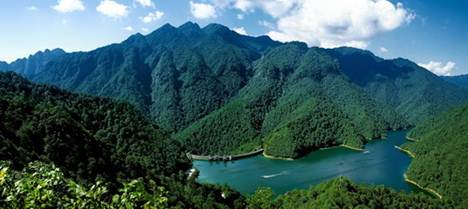News & Updates
Lotus - A trusted name in family travel
Jiangxi Province
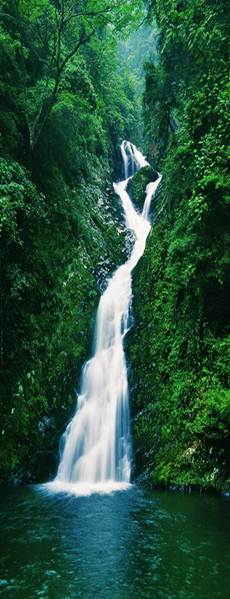 Jiangxi province is in southern region of China and is situated in the middle and lower reaches of the Yangtze River. The landscape of Jiangxi is dominated by mountains which cover almost 40%of the province's territory. Most of the mountains lie on the provincial borders. Its bordering provinces include Zhejiang, Fujian, Guangdong, Hunan, Hubei and Anhui. Jiangxi offers natural beauty and a wonderfully rich treasure trove of ancient and historical sites of Chinese culture. You can enjoy the beauty of misty mountains and fresh water lakes between highlights of history. Jiangxi province got its name during the Tang Dynasty (618 – 907AD) and is periodically called the Gan Province, because the Gan River runs through it.
Jiangxi province is in southern region of China and is situated in the middle and lower reaches of the Yangtze River. The landscape of Jiangxi is dominated by mountains which cover almost 40%of the province's territory. Most of the mountains lie on the provincial borders. Its bordering provinces include Zhejiang, Fujian, Guangdong, Hunan, Hubei and Anhui. Jiangxi offers natural beauty and a wonderfully rich treasure trove of ancient and historical sites of Chinese culture. You can enjoy the beauty of misty mountains and fresh water lakes between highlights of history. Jiangxi province got its name during the Tang Dynasty (618 – 907AD) and is periodically called the Gan Province, because the Gan River runs through it.
Jiangxi has a warm and humid climate with cold springs and winters, hot summers and dry autumns. Visitors to the area may find it hard to leave its beautiful mountains, lakes and rivers. Particularly attractive is Poyang Lake, which is the largest fresh-water lake in China, and is also the largest winter habitat for white cranes. When winter approaches, about 2,800 white cranes will migrate to Poyang Lake to spend their winter. It is a lovely sight if you are there to witness it.
With Jiangxi’s beautiful landscapes there are several major scenic locales. The major spots include: Mount Lushan, Jinggang Mountain and Poyang Lake. Two of the most key historical and cultured cities are Nanchang, the provincial capital and Jingdezhen, commonly known as the porcelain capital of the world.
Lushan
Mt. Lushan is at the center of Jiangxi province and towers between the Changjiang River and Lake Poyang, offering charming peaks and quiet valleys. It is considered one of the most picturesque landscapes in China and is listed as a World Heritage site by UNESCO. Because it is well-known for its natural beauty and pleasant climate, this area is an attraction for Chinese tourists, and is considered a great spot for rest and relaxation. The Lushan Botanical Garden was set up in 1934, and contains more than 3,400 species of plants and a collection of over 100,000 plant varieties. Other tourist attractions in the area are: the ancient temples at Longhu Mountain, Qingyuan and Donglin, which attract visitors with their unique religious architecture. Additional interest points include: White Deer Scholars' House, Jiujiang Mist-and-Water Pavilion, Hukou Stone Bell Mountain, and Pengze Dragon and Palace Cave.
Mt. Jinggang
The lofty and majestic Jinggang Mountain stretches over the border of Hunan and Jiangxi provinces. The breathtaking mountains boast 100-odd peaks with very unique shapes. Some of the peaks look like statues of tigers leaping over a deep stream, appearing as if they were made by highly skilled craftsmen. The Nanping Peak is a sheer rise of thousands of feet and stretches for tens of miles with hard rocks rocketing into the sky. The rocks in the shape of birds or beasts look so lifelike that when people visit, there is discussion that the rocks seem to change according to your imagination.
The streams of Jinggang Mountain enjoy a strong flow and a great drop. |
The Five Fingers Peak is perhaps the most well-known site in the area. With an elevation of 1,583 meters, it is the highest peak and is the dominant symbol of Jinggang Mountain. The peak got its name because, when viewed together, the peaks resemble five fingers. The fame of the Five Fingers Peak grew substantially because it was printed on the old version of 100-yuan RMB bill. The Jinggang Mountains are also considered historically significant, because it is where the first rural revolutionary base area was set up by the late Chairman Mao Zedong in 1927. Today the focus is on its wonderful landscape that attracts many visitors. The following places on Mt. Jinggang are also good for sightseeing: Ciping, Wudashaokou, Dajing, Xiaojing, Huang'ao and the waterfall at Five-Dragon Pool.
|
The Five Fingers Peak with an elevation of 1,583 meters is the highest peak and major symbol of Jinggang Mountain. |
The waterfalls on Jinggang Mountain are a famous feature, because the streams enjoy a strong flow and drop from great heights. The area boasts more than 100 waterfalls, which attracts thousands of visitors from home and abroad.
Cities of Renown
Nanchang
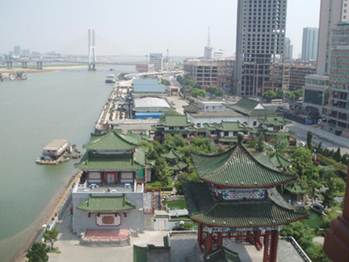 The modern Jiangxi area – including Nanchang – was first incorporated into Chinese territory during the Qin Dynasty. In 201 BC, during the Han Dynasty, the city was given the Chinese name Nanchang and became the administrative seat of the military. The name Nanchang means "southern flourishing". In 1949 Nanchang was still essentially an old-style administrative and commercial city, with little industry apart from food processing and had a population of about 275,000.
The modern Jiangxi area – including Nanchang – was first incorporated into Chinese territory during the Qin Dynasty. In 201 BC, during the Han Dynasty, the city was given the Chinese name Nanchang and became the administrative seat of the military. The name Nanchang means "southern flourishing". In 1949 Nanchang was still essentially an old-style administrative and commercial city, with little industry apart from food processing and had a population of about 275,000.
Since that time, Nanchang has been extensively industrialized and now is a large-scale producer of textiles. Papermaking is also a large industry and food processing remains a key elements. IN the 1950’s heavy industry such as coal and machinery began to be important, with an emphasis on agricultural equipment. As industrialization grew, the shift turned towards automobile production and diesel engine production. Currently there is also a large chemical and pharmaceutical industry centered in Nanchang.
Jingdezhen
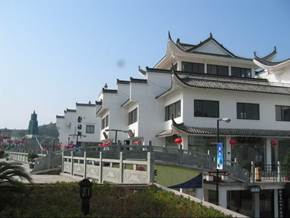 Jingdezhen is world-renowned for its porcelain and is located on the east side of Lake Poyang. Ceramics were produced here as early as 1,800 years ago in the Eastern Han Dynasty. Emperor Zhaoheng decreed that the imperial porcelain would be produced here. Porcelain use grew significantly and became renown during the reign of Emperor Jingde. With its position as the imperial kiln of Emperor Jingde, people began to call this area Jingdezhen.
Jingdezhen is world-renowned for its porcelain and is located on the east side of Lake Poyang. Ceramics were produced here as early as 1,800 years ago in the Eastern Han Dynasty. Emperor Zhaoheng decreed that the imperial porcelain would be produced here. Porcelain use grew significantly and became renown during the reign of Emperor Jingde. With its position as the imperial kiln of Emperor Jingde, people began to call this area Jingdezhen.
Today Jingdezhen remains a national center for porcelain production. While one visits this ancient city, you can visit many pottery factories and ancient kiln sites. Also, Jiangxi is one of the ancient tea-producing areas in China. The Black tea produced in Ningzhou City and the Green Tea produced in Wuyuan City is well-known throughout all of China.
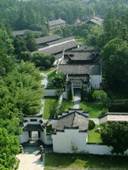
The well-known Chinese writer Guo Moruo once said: "The best porcelain of the world is in China and China's best is in Jingdezhen." Jingdezhen porcelain is said to have four special features: white like jade, bright as a mirror and thin as paper, and sounds like a chime. With its elegant form and unique technique, the art of Jingdezhen porcelain is a source of great pride in Chinese civilization.
Jiangxi has historically been a province from which a significant number of adoptive families have traveled to meet their newly adopted child and therefore have a special interest in this province. Below are listed the key known orphanage locations in Jiangxi province. With this history, beautiful landscapes and strong connection for adoptive families, Jiangxi will be a destination in the future for many adoptive family visitors.
Sources: Wikipedia, Wikitravel, China Daily, Jiangxi Tourism Association, Lotus Travel,
